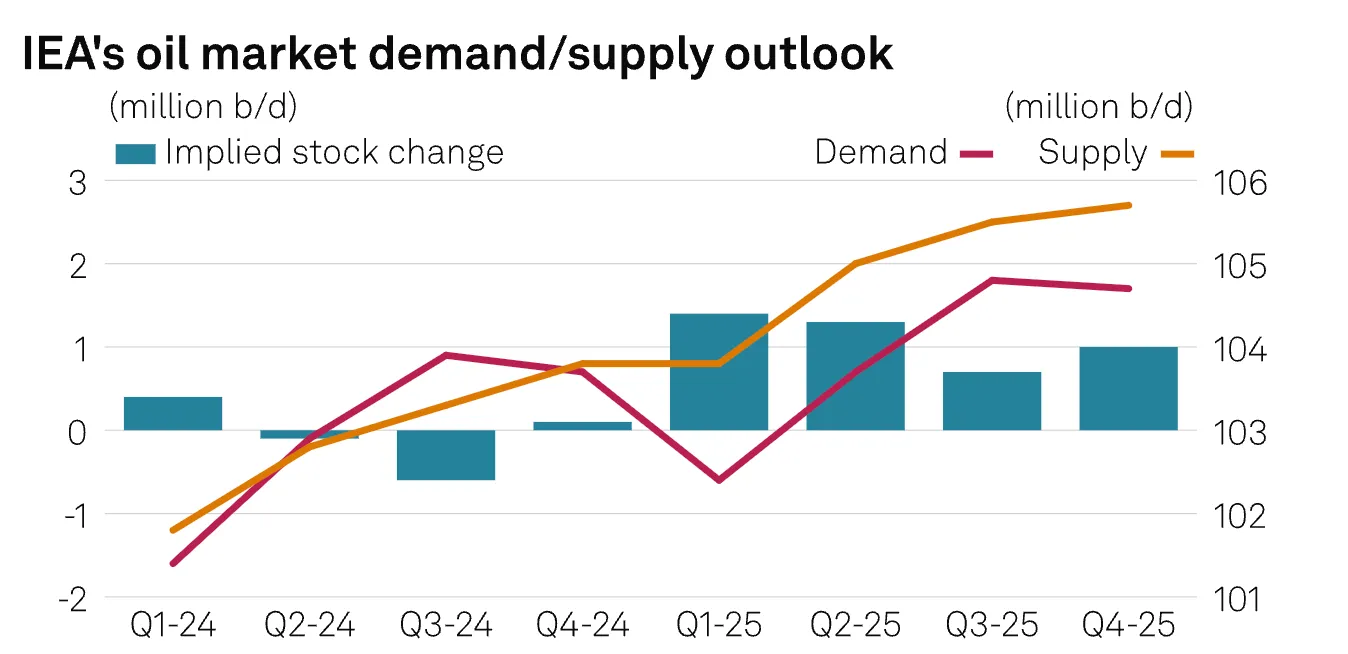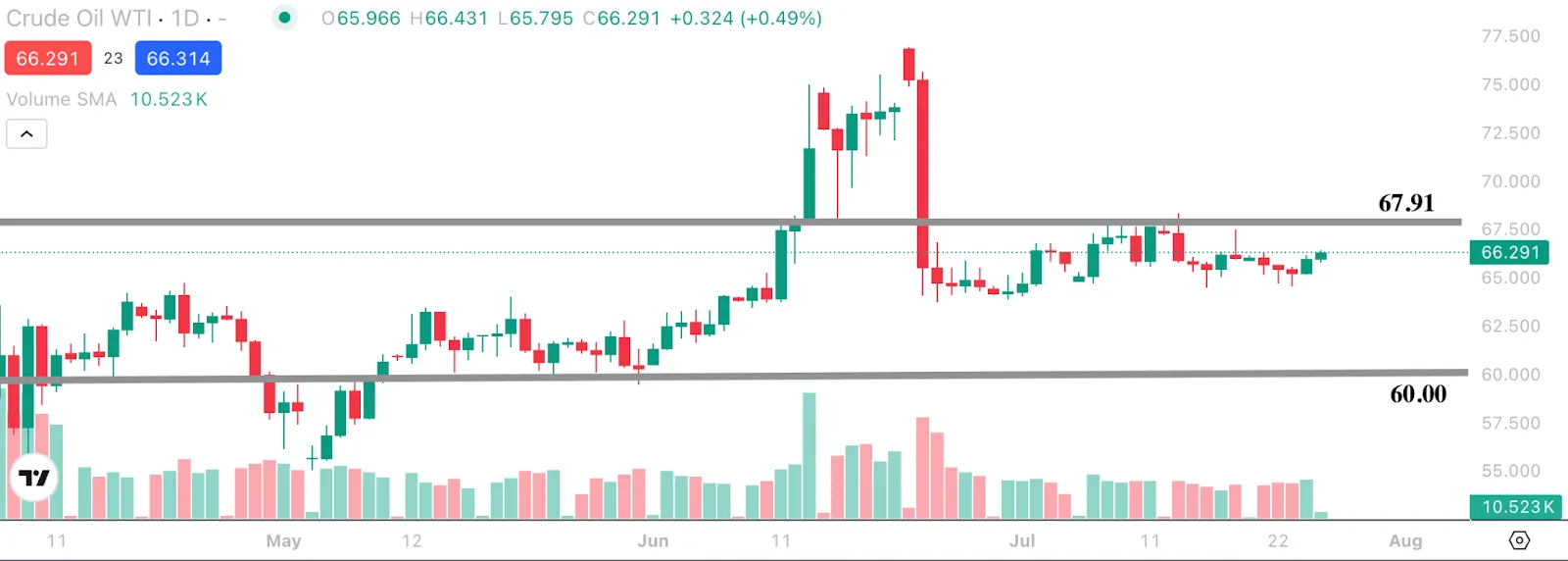Oil price range-bound as fundamentals outweigh headlines
.webp)
Note: As of August 2025, we no longer offer the Deriv X platform.
Oil is one of the most headline-driven assets out there, and yet, sometimes, it just doesn’t budge. Trade talks spark optimism, inventories tumble, supply routes wobble... and crude prices? They tick sideways.
According to experts, this happens because, behind the noise, the fundamentals still rule. Supply and demand haven’t shifted meaningfully, and traders are increasingly wary of jumping on short-lived rallies. It’s a case of the market saying: “Nice headline - now show me the follow-through.”
Oil market reactions to global news explained
Let’s be clear - oil reacts to news. Big inventory draws? Prices tick higher. Rumours of Russian export cuts or trade truces? Same thing. But these moves tend to be shallow, and more often than not, they reverse within days.
Markets are forward-looking. By the time headlines hit the wires, traders have usually priced in the probabilities. A trade agreement between major economies might sound bullish for oil demand, but if it’s already been months in the making, it won’t carry the same punch as a true surprise.
In other words, the market needs more than promises. It wants proof - actual changes in demand, hard data, not just noise.
Why oil prices remain stuck despite rising supply
The supply side of the equation hasn’t exactly helped the bull case either. OPEC+ has been cautiously pumping more, and there’s always chatter about easing restrictions on sanctioned producers like Venezuela or Iran. Every additional drop of crude in a well-supplied world adds weight to the top end of oil’s price range.
At the same time, the demand outlook hasn’t caught fire. Growth remains sluggish in key economies, and China’s rebound has been patchy at best. Even in the US, where consumption typically holds firm, refiners are facing mixed signals - robust summer travel one week, weaker gasoline margins the next.
It’s this push-and-pull, supply returning while demand flickers, that keeps oil prices in check. Neither side is strong enough to dominate, which leaves crude drifting rather than charging ahead.

Why technical levels are capping oil’s price movement
There’s also the not-so-small matter of technical resistance. WTI, for example, has consistently failed to clear the $70 mark with conviction. Each time it flirts with that level, sellers step in. The same goes for Brent and its tendency to stall in the high $60s to low $70s.
Support holds just as firm, typically in the low $60s, creating a reliable, if frustrating, band that traders have learned to lean on. In short, oil has become a range trader’s dream and a trend trader’s headache.

Until something breaks - either a true supply shock or a confirmed demand surge - there’s little incentive for big moves beyond these comfort zones.
False breakouts make oil traders wary of headline-driven moves
There’s also a psychological layer to all this. Traders have been burned by false breakouts before. Optimism around diplomacy or macro data rarely delivers the explosive follow-through it once did.
Nowadays, markets tend to adopt a “wait and see” stance. This cautious sentiment feeds back into price action - fewer buyers on the breakout, more sellers on the spike. Everyone’s looking over their shoulder, wondering if this rally will actually stick.
So while the headlines keep rolling in, the market has, in a way, become desensitised. It takes more than just noise to get traders to jump.
What could trigger a breakout in oil prices?
If crude is to escape this price gridlock, it’ll need something with real staying power. Think:
- A major and sustained production disruption - not just a headline - an actual bottleneck.
- A surprise in demand, like a stronger-than-expected economic rebound or a cold snap that stretches global diesel supplies.
- Or even coordinated policy shifts - OPEC cuts that actually bite, or fiscal stimulus that fuels consumption.
Until then, oil is likely to continue reacting to the noise while respecting the range.
There’s no shortage of excitement in oil markets - geopolitics, weather, diplomacy, you name it. But excitement doesn’t always equal direction. For now, crude is the market that moves, but doesn’t break. And that, in itself, is a story worth watching.
At the time of writing, Oil has seen a slight uptick in a buy zone within its recent range area - hinting that we could see some more lift off before arriving at the sell zone at the top of the range. The volume bars add to the consolidation narrative, with sellers and buyers evidently engaged in a tug of war.
Should we see an uptick, prices could hold at the top of the range at $67.59. Conversely, if we see a downturn, prices could find support at the $64.48 and $60.23 support levels.

Trade oil price action with a Deriv MT5 account today.
Disclaimer:
The performance figures quoted are not a guarantee of future performance.



